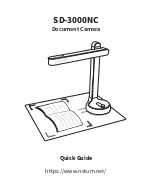
322
THE HASSELBLAD MANUAL
gives many surfaces a deeper, more saturated color. Refl ections can also look natural, as on
porcelain or silver, or they can make pictures more beautiful. Eliminating refl ections can make
water dull and uninteresting. Store windows are often visually effective because of the refl ec-
tions on the glass. Eliminating the refl ections takes all the visual effectiveness away. Watch
how the polarizing fi lter affects the subjects in your composition. You must be aware that the
effect of the polarizing fi lter depends on the angle from which the subject is photographed
and is determined by the material that refl ects. For a store window, maximum elimination is
obtained when the window is photographed from about 35 degrees. When photographing
the window from the front, a polarizing fi lter will not change anything (see Figure 17-8).
Fortunately, the effect of a polarizing fi lter can easily be seen. Turn the fi lter on the lens
and view the scene from different angles while evaluating the image on the focusing or pre-
view screen. You can even see the effect before you place the fi lter on the lens. Turn the fi lter
held in front of your eyes while looking at the subject or scene and see what happens. The
difference may be dramatic. A polarizing fi lter need not be turned for maximum effect. You
can use it at whatever setting produces the desired results.
Because the light coming from the sky has been polarized by passing through the thin
layers of the atmosphere, a polarizing fi lter can make a blue sky dramatically darker, but only
when you are photographing at a 90-degree angle to the direction of a line drawn from the
sun to the camera; in other words, with sidelight (see Figure 17-6). Polarizing fi lters can drasti-
cally improve distant shots by eliminating refl ections, and thus improving color saturation. This
improvement again happens only with sidelight (see Figure 17-7). Many other outdoor scenes
can be improved by simply eliminating refl ections on some surfaces, so it pays to examine the
possibilities and examine the effect over the entire image area. As the polarizing effect in the
image depends on the angle of refl ection, the resulting effect may differ over the image area,
especially in wide angle pictures. Refl ections on a store window may be eliminated on one
side of the window but not on the other; a blue sky may be darker on the left side than on the
right. Such differences can be seen in the viewfi nder, so evaluate the image carefully. Polarizing
fi lters work in color and black and white photography, and the improvements are similar.
Polarizing fi lters require an exposure increase because the polarizing material has a
grayish tint. The required increase is the same whether the fi lter is rotated to the position
with minimum or maximum polarization. As polarizing fi lters reduce or eliminate refl ections,
polarized images sometimes appear darker than expected but only because the refl ections
are no longer there.
Figure 17-6
Angle for polarization. Refl ected light is polarized only if it hits a surface at an angle
between 30 and 40 degrees, depending on the material of the refl ecting surface (left). Skies are
darkened by a polarizing fi lter only when the pictures are taken at right angles to the sun (right).
Summary of Contents for Digital Camera
Page 1: ......
Page 2: ...The Hasselblad Manual ...
Page 3: ...This page intentionally left blank ...
Page 13: ...This page intentionally left blank ...
Page 166: ...Heidi Niemala Photographed for clothing designer with a 150mm lens ...
Page 167: ...Heidi Niemala Editorial portrait with a 150mm lens ...
Page 168: ...Heidi Niemala Photographed with a 50mm lens during a sand storm at White Sands ...
Page 200: ...Jonathan Exley Lifestyle Designer Kathy Ireland Courtesy of kathyireland com ...
Page 244: ...Marco Grob A make up test shot made with an HC Macro 4 120mm lens on an H camera ...
Page 398: ...Close Up Photography on Film or Digital 383 ...
Page 400: ...Jonathan Singer ...
Page 401: ...Jonathan Singer ...
Page 421: ...This page intentionally left blank ...
















































